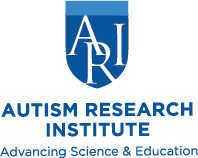A new study suggests that exposure to air pollutants before birth and during childhood may lead to alterations in white matter microstructure in the brain. Abnormal white matter microstructure has been linked to autism spectrum disorders (ASD) as well as depression and anxiety.

In their research, Anne-Claire Binter and colleagues studied the air pollution exposure of more than 3,500 children enrolled in a study in the Netherlands. To determine each child’s exposure to air pollution during the study period, the researchers estimated the daily levels of nitrogen dioxide and particulate matter in the children’s homes on a month-by-month basis during the mother’s pregnancy and throughout childhood until the children reached 8.5 years of age. When participants were between 9 and 12 years of age the researchers performed magnetic resonance imaging to examine the structural connectivity of their white matter and to measure the volumes of several brain structures.
The researchers found an association between greater exposure to pollutants before 5 years of age and more significant alterations in brain structure at 9 to 12 years of age. In addition, they detected a link between exposure to fine particulate matter—especially during the first two years of life—and an increased volume of the putamen during preadolescence. The putamen is a brain structure involved in motor function, learning processes, and many other functions, and Binter notes that a larger putamen has been associated with ASD, schizophrenia, and obsessive-compulsive spectrum disorders.
She comments, “The novel aspect of the present study is that it identified periods of susceptibility to air pollution. We measured exposure using a finer time scale by analyzing the data on a month-by-month basis, unlike previous studies in which data was analyzed for trimesters of pregnancy or childhood years.” She also notes that the levels of air pollution to which the children were exposed met European Union (EU) standards, suggesting that brain development can be affected by exposure to levels of pollution currently considered acceptable.
She adds, “One of the important conclusions of this study is that the… brain is particularly susceptible to the effects of air pollution not only during pregnancy, as has been shown in earlier studies, but also during childhood.”
—
“Air pollution, white matter microstructure, and brain volumes: periods of susceptibility from pregnancy to preadolescence,” Anne-Claire Binter, Michelle S.W. Kusters, Michiel A. van den Dries, Lucia Alonso, Małgorzata J. Lubczyńska, Gerard Hoek, Tonya White, Carmen Iñiguez, Henning Tiemeier, and Mònica Guxens, Environmental Pollution, September 2022 (online). Address: Mònica Guxens, Barcelona Institute for Global Health–Campus Mar, Doctor Aiguader, 88, 08003 Barcelona, Spain, monica.guxens@isglobal.org.
—and—
“Possible association between air pollution exposure, especially at young age, and alterations in brain structure,” news release, Barcelona Institute for Global Health, September 22, 2022
This article originally appeared in Autism Research Review International, Vol. 36, No. 4, 2022
ARI’s Latest Accomplishments
Connecting investigators, professionals, parents, and autistic people worldwide is essential for effective advocacy. Throughout 2023, we continued our work offering focus on education while funding and support research on genetics, neurology, co-occurring medical
Biomarkers start telling us a story: Autism pathophysiology revisited
Learn about emerging research on biomarkers and autism from a recent ARI Research Grant recipient. This is a joint presentation with the World Autism Organisation. The presentation by Dr.
Editorial – Bernard Rimland’s Impact: Sixty Years Since the Publication of ‘Infantile Autism’
In this milestone year of 2024, the Autism Research Institute commemorates the 60th anniversary of Dr. Bernard Rimland’s groundbreaking work, Infantile Autism: The Syndrome and Its Implications for a Neural Theory of




